Rock Art and the Archaeology of Pastoralism, Ancient Writing and Symbolism of Time (ca. 3000 BCE–1500 CE)
When Arnoldi (
1984) discussed the artistic heritage of the Somali, only verbal heritage and objects were reported. However, now this should also include rock art and cave paintings, which mainly came to light in the last few decades (Brandt and Carder
1987; Gutherz
et al.2003; Mire
2008). We have over 70 sites reported to us but we now present about 30 sites in this map. The studies of rock art in this region are still in their infancy; however, the pre-civil war efforts include the work of Clark (
1954), Lewis (
1958) and Brandt and Carder (
1987). Beyond these, not much was known until the 2000s, through the Ministry of Tourism and Culture’s work in Somaliland. The rock art sites are represented in Map
3. The sites of Laas Geel (26), Dhagah Kure (31), Karin Hagane (84), Dhagah Nabi Gallay (1), Haadh (38), Jilib Rihin (21) and Dhambalin (79) depict paintings that are generally of the same style as that of the bovine rock-art sites of northeast Africa and Proto-historic, Ethio-Sabaean style (Červiček
1971,
1979). Also the petroglyph site of Dhagah Maroodi (2) is unique, since most of this type of bovine rock-art sites are painted rather than engraved. Most of the rock-art sites are on the plateau and concentrated in the natural shelters of the mountain chains, a roughly east–west belt in the middle of Somaliland. Hunt (
1951) and Pallister (
1963) have outlined the topography of this region. However, it will suffice to say that painted or engraved rocks are mostly of granite and limestone, but also sandstone like at Dhambalin (Mire
2008). God Hardhane, a limestone cave with pecked images, is a type of rock art found in Sanaag mostly. The unpublished site of Sabeeno Furte (37) (see Fig.
1) is also in a limestone mountain chain near Eerigaabo, in the Sanaag region. The paintings are on the side of a cliff, where the stone has been cut and smoothed, and the animal images are pecked. A considerable effort has gone into creating this art, as it is about 4–5 m above the bottom, where there is a spring and an underground lake below the rock. The depictions include pecked mounted horses and male figures standing alone, camels alone as well as carrying loads, caravan style. The depiction style is similar to that of the God Hardhane cave (47) (Lewis
1958), located near Ceel Afweyn, also in Sanaag region.
The rock art sites of Somaliland show that between the third and second millennium BCE, herding humpless cows (Gutherz
et al.2003), sheep and goats (Mire
2008), as well as hunting antelopes, giraffes and other wild animals, was the basis for the subsistence economy. These sites inform us about the earliest pastoralists in the Horn of Africa and food-producing societies from
ca. 5000 years ago. The depictions of various wildlife and hunting scenes also suggest a mixed economy and much greener environment than the region offers today. The composition of the paintings suggests symbolism related to beliefs and practices (Mire
2008). The colours are rich mono- and polychromes, including shades of orange, yellow, white, violet, green, red, brown, blue, and pink. Colours have mostly been sourced from local stones, some scattered at the sites. Furthermore, we also have a cross-cultural superimposition at the rock art sites of Dhambalin and Dhagah Kure. Dhambalin is the first and only site in Somali territory that depicts sheep and goats unambiguously. This site also contains a number of hunting and herding scenes that seem ritualistic, in terms of decoration of the animals and the hunting human (male) figures with dogs, and surrounded by animals including antelopes and giraffes. Animal or ‘tribal’ marks are also prevalent at most sites. Other animals include dogs or
Canidae which accompany the human figures. In the case of Dacawale (16) in Dhaymoole where my maternal family lives, we have what appear to be lunar calendars, depicting a 28-day calendar, and crescents and full moons as well as geometric and other intricate designs and animal depictions. There is not much scope here for detail but at Dhambalin, sheep, goats and bovines are decorated and some of the decorations are similar to those at Karin Hagane and Laas Geel. Dhambalin does not have the cows typical of Dhagah Nabi Galay, Karin Hagane (Brandt and Carder
1987), Laas Geel (Gutherz
et al.2003), Jilib Rihin and Haadh (Mire
2008)—where the heads of bovines appear like a beaker—and in fact displays headless beasts. At Karin Hagane and Laas Geel types, the head is situated close to the horns, often large ones. What looks like either decoration such as a piece of garment or some other adornment (painting?) appears on the neck. These parts are combined in various colours and produce a polychrome figure. However, at all the bovine sites, the cows are depicted with full udders and clear teats.
As usual with rock-art sites, the dating remains a problem, including Laas Geel, as the only thing dating is based on is small fragments of pigment found in layers believed to date to 3500–2500 BCE. There is not a single ceramic sherd found at Laas Geel’s shelter 7, the only excavated shelter, upon which the dating estimate is based. However, potential exists at Dhambalin where there are surface finds of decorated pottery as well as burials associated with the rock shelter.
Also in Dacawaale and Dhaymoole region, there are megaliths with rock art, cows and other animals painted in black and white or done as carvings. Laaso Dacawo’s Dhagah Seefaha leh (18) are massive black granite stones dotted randomly, and are adjacent to what appears to be pre-Islamic burials. The stones are marked with what the local people call “swords.” These “swords” are also found on similar massive black granitic stones at Goroyo Cawl (Awl) site (85), near Boorama.
We also need to understand better the rock art sites of Jifo micidheer (51), Sabo cad (50), Dhagaha habeedaleh (49), Dhagaha fooda cad (25), Dhagah Shabeeleh (15), Dhagahyo Gobaad (48) and Hor joog (3).
The Archaeology and Art of Burial: Megalithic Sites (ca. 2000 BCE–1500 CE)
David Phillipson (
1998) reckons the use of stelae to mark graves was a widespread practice in northeast Africa between 5000-–2000 years BCE. The Cushitic (Hamitic) word
hawelti for standing stelae is borrowed into the Semitic languages of the Horn later. However, in the literature of the Horn of Africa, megalithic sites and cemeteries are mostly known from Ethiopia, which hosts sites such as Aksum, Tiya and Tutu Fela (Azaïs and Chambard
1931; Breuil
1934; Graziosi
1964; Joussaume
1981,
1995; Phillipson
1998). Except for cairns (
araweelooyin) (Lewis
1961), no other stone architectural burial structures have been reported previously in Somali archaeology. Cairns are found all over the country and in certain areas they are aligned, as along the Red Sea coast roads between coastal Heis (Xiis) (40) and Maydh (41) in Sanaag region (see Fig.
2). However, the recent surveys have yielded countless megalithic burials and stelae cemeteries (see Map
2), some of which we present here. These are under threat of looting and digging as well as urban development, as the demand for building material increases and the heaps of stones are easy and ready in the eyes of the stone collectors/cutters.
Somaliland has varied burial traditions, including
araweelooyin (cairns), tumuli, dolmens,
ganggrifts and stelae (
hawelti). Many are grouped in elaborate graves such as those in Gidheys (22). At this site, there are ancient cemeteries with single carved stones as well as stelae cemeteries. It is only during Islamic times that a certain homogeneity emerged but everything before that testifies to elaborate burial practices of localized styles.
There is a tradition of carved gravestones and decorated stelae in Somaliland, which has never been reported. Curle (
1937) collected some phallic, supposed gravestones in the western region of Somaliland, but published none of these. No further information accompanies them, except that they are from Somaliland. The Horn of Africa tradition of phallic gravestones (as evidenced in Tutitui and Tutu Fela) seems to have been practiced contemporarily with Islam and, as evidence by my own study of the Aw-Barkhadle site (Mire
2015), perhaps in a syncretic way. Although dolmen burials are not common, they also occur at Aw-Barkhadle where I found cairns as well in 2007; however, the rapid spread of
Prosopis juliflora (a type of mesquite) at the site has now hidden the dolmens completely.
When asked, locals talk about ancient traditions where some people were buried in standing or sitting positions, as well as lying down. Only excavations will yield evidence of this, but some burials are more than 2 m above ground and prompt such thinking, as those near Gidheys. Also, some burials are inside the trunks of big trees—which is not too unlikely, as the belief in sacred trees was widespread, pre-Islamic and also contemporary with Islam (Mire
2015). A grave marked with a stele carrying an Orthodox cross was found
in situ at Aw-Barkhadle, which confirms that Christianity was known here during pre-Islamic times or contemporary with Islam. The Somali Tumaal (blacksmiths) tribe, thought to have a Hebrew origin, are said to still visit the Xabaalo tumaalood (blacksmiths’ cemeteries), 30 km from Berbera on the Berbera Road, for ancestral veneration rites. The Somali regions in the north were, in pre-Islamic times, part of the Aksumite empire. Also, gravestones marked with a Star of David are found around Dhubato (27) village in Hargeysa region.
Some of the megalithic burials in Somaliland have funerary chambers (
e.g., Gidheys). However, there are great similarities with sites in Ethiopia, northern Kenya, Djibouti and Eritrea. The megalithic traditions of Somaliland could go back to Neolithic times. However, many seem to be from about the second millennium BCE up until recently, being contemporary with Islam. Round or rectangular tombs with upright stelae are common too, particularly in Saahil region and Bustanka, in Dhaymooleh area.
Decorated Stelae Cemeteries (ca. 1500 BCE–1500 CE)
As noted, there is also a Cushitic tradition of stelae erection. These are usually sacred landscapes in the Horn of Africa (Mire
2015). Decorated stelae cemeteries exist in abundance in the archaeology of Ethiopia; however, in Somali region, this has not been reported previously. However, the decoration of stelae was a widely practiced tradition in Somaliland too, as recent archaeological surveys demonstrate (see Map
2). They are concentrated in the area between Sheikh in the Saahil region and Burao in the Togdheer region. The reasons for locating these sites in these areas might be partly because of the current infrastructure, which allows access while also remaining undisturbed, but also because of the fertile plateau, which attracts human habitation in general. This section on decorated stelae includes both those considered to be from pre-Christian and pre-Islamic times. These sites include Aw-Barkhadle, Gidheys, Nagaagir (14), Hayeeti (63), Qar-Gebi Haqayo Malaas (64), Siir (52), Darayley and Bagan (44), Suuqsade (Xaragotir) (61), Ximan (36) (see Fig.
3) and many more. The grave-markers carry engravings, which include solar and geometric signs as well as schematic depictions of animals.
Most decorated stelae cemeteries are found in the Saahil and Togdheer regions. Environmentally, resources might have benefitted the Golis and Wagar mountains as well as the evergreen habitat near the plateaus of Saahil region. It is possible that regions like Hargeysa might have lost some of its ancient heritage due to rapid urban development, at least in the last two decades. It is also possible that phallic grave-markers have been destroyed, as these are more explicit than ancient signs. However, due to demand for illicit antiquities from Western countries like the UK and Italy, as well as the Gulf countries, this is one of the most threatened class of Somali antiquities (Mire
2011). Similar sites have been looted in Dhaanbari, near Sheikh (Mire
2011).
Ximan of Saahil region in the district of Sheikh has huge
wadis surrounded by decorated stelae of about 1 m in height, carved with symbols including geometric patterns, which indicate Cushitic pre-Islamic cultures probably a few millennia old. The cave paintings of Dacawale contain signs that may be similar to those on grave-markers in Ximan and some other sites in the Saahil region. At Suuqsade in the district of Sheikh, there are various types of graves including some huge cairns (
araweelooyin/maguurto) and decorated stelae cemeteries. South of Suuqsade are mountains in an area known as
Xaragotir, which has decorated stelae cemeteries and cruciform burials as well as huge cairns.
At the site of Hayeeti Oodan, near Berbera in the Saahil region, we have many different burials. Mohamed Abdi Ali reported a grave marked with a stele engraved with what looks to me like a crown. This could be the grave of a pre-Islamic regional priest, perhaps a Christian priest.
The “Puntite” Sites (ca. 2000 BCE–third century CE)
In relation to the discussion of cairn sites, it must be noted that since 2012 in Somaliland, there have been reports of “Pharaonic” or “Puntite sites,” which all seem to be associated with cairns (see Map
2). There is no scope in this article to discuss the Land of Punt, which is located possibly somewhere on the African side of the southern Red Sea Coast, but readers can consult the literature (
e.g., Bard and Fattovich
2007; Phillips
1997; Kitchen
1993). I was asked by the Somaliland Government to investigate claims made about the existence of such objects in the summer of 2014. The Ministry of Tourism had been having problems with a man who called himself a Sheikh and claimed to have spirits working with him, digging sites. I let him take me to the sites he found with the help of these spirits (
gins). Another man who works with him showed me pictures of the digging, and a film of the two of them and another man, involved with the Ministry, digging such sites. The Sheikh took me to his house in Hargeysa to show me the so-called “Pharaonic” sculptures. He proudly declared that he was selling them for up to US $15000, and named well-known figures as his clientele. The Ministry was worried that due to the demand for illicit antiquities, there might be (re)productions of sculptures. However, the sites were former cairns that had been emptied of their stones. Usually stonecutters who are selling stones to construction companies roam the landscapes for cairn sites, as these are perfectly sized stones for building local houses. I was shown sites with alleged Pharaonic artefacts; these include the twin peaks of Naaso Hablood (“girl’s breasts,” 107), Maxamood Mooge (109), Hargeysa Airport area and Masalaha (108). I have previously climbed the left peak, which has shelters with stone tools. Also, there are underground caves that show ancient habitation in the area between the two peaks. The Land of Punt thus may well be the area of current-day Somalia/Somaliland. However, the current interest has triggered looting activities, as demand has increased from wealthy locals for so-called “Puntite” sculptures. The sculptures and decorated tiles claimed to be of “Puntite” origin must be examined properly along with the sites attributed to them, some of them noted in the maps herein.
Red Sea Sabaean/Himyarite and Pre-Askumite Empires (ca. Ninth Century BCE–Third Century CE)
There is an extensive and ancient relationship between the people and cultures of both sides of the Red Sea coast (Phillipson
1998). Rock art sites such as Dhagah Nabi Gallay and Dhagah Kureh include Sabaean and Himyarite writings associated with South Arabia (see Map
3). In certain contexts, they appear to have been added to the rock art later, suggesting by superimposition. In 2007, more rock art sites with Sabaean and Himyarite writings in and around Hargeysa region were found, but sadly some were bulldozed by developers, as the Ministry of Tourism could not buy the land or stop the destruction. I have also recorded a burial site with such writings in Shalcaw (39), on the Red Sea coast (see Fig.
4). Furthermore, the Qar-Gebi megalithic burials include what might be ancient writings, perhaps Himyarite and Sabaean, but it needs to be confirmed. The Pre-Aksumite cultures of current-day Ethiopia are linked with South Arabian kingdoms. The Pre-Aksumite Empire itself might have been part of, or at least culturally linked with, contemporary kingdoms in what is now the Somali-populated region. Not only are there links through the findings of Himyarite and Sabaean writings, but also early Christianity seems to have spread throughout the Horn, including the Somali region, as explored below. However, the burial site of Shal’aw is associated with other ancient burials in the immediate
wadis in this sandy coastal landscape. The “
wadi burials” are part of an ancient landscape that has been washed away by the floods and now exposed vertically, showing clear stratigraphic levels. If these burials can be rescued in time, there is a potential that we learn more about first-millennium BCE cultures of this little known Red Sea region, and associations with the Himyarite and Sabaean cultures, as well as perhaps ancient Egypt and the trade in frankincense and myrrh, still a big part of the economy in this area.
The Archaeology of Ancient Christianity in the Somali Context: Burials (ca. Fourth–Twelfth century CE)
To my knowledge, this section is the first report of ancient Christianity in Somali territory. Yet in the Horn of Africa, Christianity goes back to the first few centuries of the Current Era, the earliest such practice in sub-Saharan Africa. In Somaliland, an ancient Christian burial has been found at the pre-Islamic and Islamic site of Aw-Barkhadle (see Map
4). This is the first stela marked with an ancient Christian cross, probably of Byzantine appearance. Often, ancient Christian cemeteries or burials are found in what are early Islamic ruined towns. This shows that the areas that blossomed as towns under Islam were most likely also significant pre-Islamic centres. The Somali region seems to have been linked with pre-Aksumite kingdoms and South Arabian cultures as indicated by the Himyarite and Sabaean writing in the ancient burial and rock art contexts. Furthermore, as the pre-Aksumite culture paved the way for the Aksumite culture, it seems that the Somali region is also part of that early Christianity which presumably spread eastwards from current-day Ethiopia. Interestingly, the distribution of Christian sites falls roughly in the same area as the decorated stelae cemeteries, again another common tradition in the Horn of Africa.
The cruciform is known as
laanqayr, and tombs are very common in the archaeology of Somaliland. There are also megalithic burials where the stones are arranged in a cross. The area of Dhuxun (62), in Saahil region, has many cruciform burials as well as other megalithic burials. There are many isolated, single Christian burials, massive in their design, which we have not included in this report. Dhubato in the Hargeysa region and the Saahil area have many ancient Christian burials which are aligned as a cross. Sites such as Suuqsade (Xarago tir), and Dhuxun of Xagal, Gala Caddo (23) near Dhagah Kure, Aroori (Laanta gadaal baxday) (24), and Kal Bare (57) contain ancient Christian burials. There are also finds of Christian codices in Somaliland. These seem to be written in Ethiopian languages, including Ge‘es. Documentation and preservation of such ancient records is urgent. Currently, there are no measures in place by the Ministry to acquire this material due to lack of financial resources as well as awareness.
Settlement, Trade and Pre-Islamic Urban Archaeology (ca. Tenth Century BCE–Twelfth Century CE)
In terms of the first-millennium BCE settlements and towns, we know that on the Red Sea/Indian Ocean coast of Somalia there is Ras Hafun (Chittick
1975; Smith and Wright
1988). This was an important site from the third century BCE, serving as a settlement to support Graeco-Roman trade. Stern (
1987) located Roman glass at Heis (Xiis), but there are also reports of Phoenician painted glass featuring female, non-African women. Also local people, while digging wells in Gabiilay (32) in the heart of western Somaliland, have located two vases, both a matte and a glazed one, the matte with figures that resemble Graeco-Roman pottery; this awaits further investigation. Greek records mention coastal fort settlements and trade with the Barbars of the Somali coast (Hourani
1995). Ancient Greek records confirm the Barbars of the coastal cities of Somali peninsula were at around 300 BC more active seafarers than the Arabs (ibid.). We know the Greeks traded here (Stern
1987; Chittick
1975; Smith and Wright
1988).
The previously unreported ancient dry-stone towns of Ceeg Wayne (35) and Seeto (8) near Burco, Gidheys town, Darayley and Bagan in Saahil region seem to be more ancient than the early Islamic towns (see Map
4). At Ceeg Weyne, south of Burao in Togdheer region, the house foundation structures include ostrich eggshell, and the graves include what seem to be pre-Islamic as well as possibly Islamic. The site also has
wadis nearby that form natural lakes (
haro), according to Mohamed Ali Abdi. These sites include megalithic burial traditions that appear to be pre-Islamic such as Gidheys near Burco, an ancient town with peculiar burials. However they may either predate or are contemporary with the pre-Islamic phase of Aw-Barkhadle.
Lengthy extract from this document by Sada Mire
https://link.springer.com/article/10.1007/s10437-015-9184-9
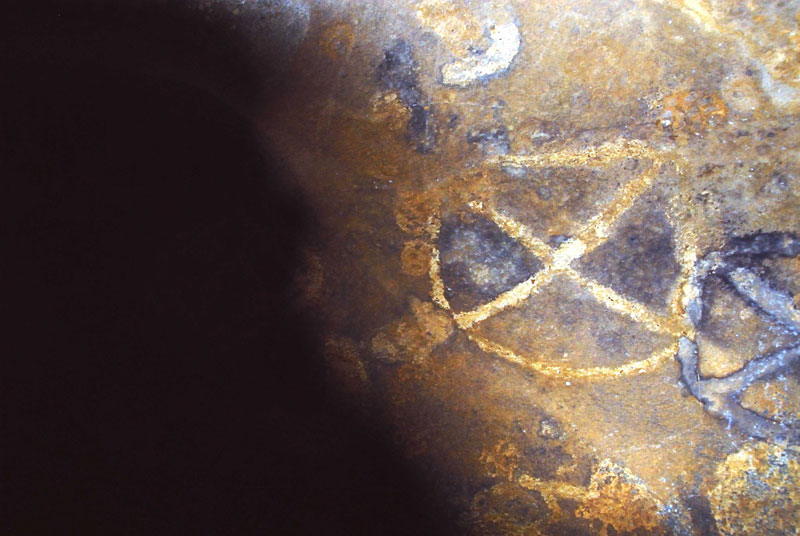
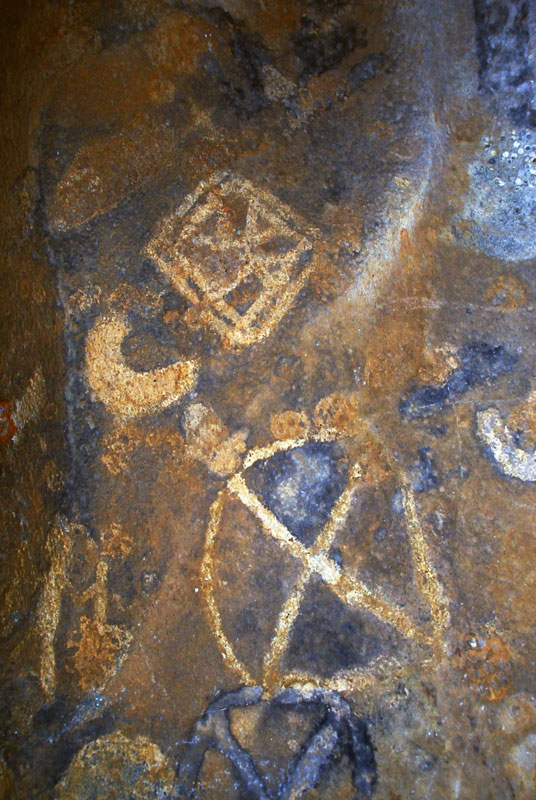
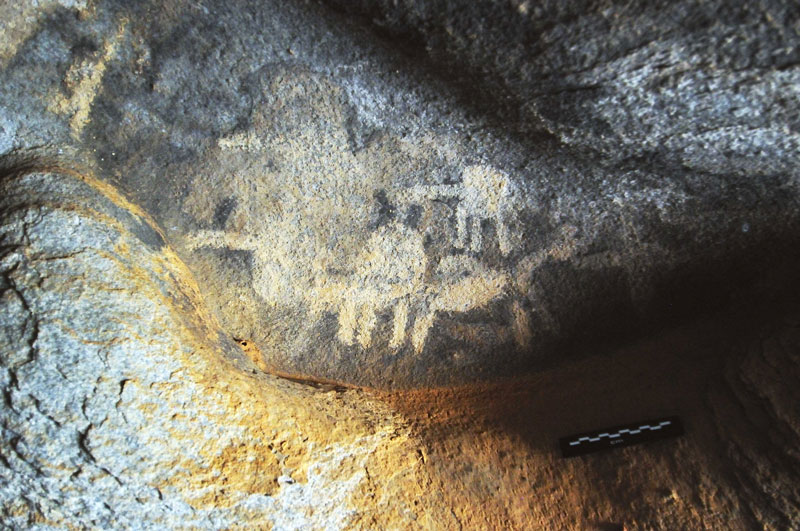
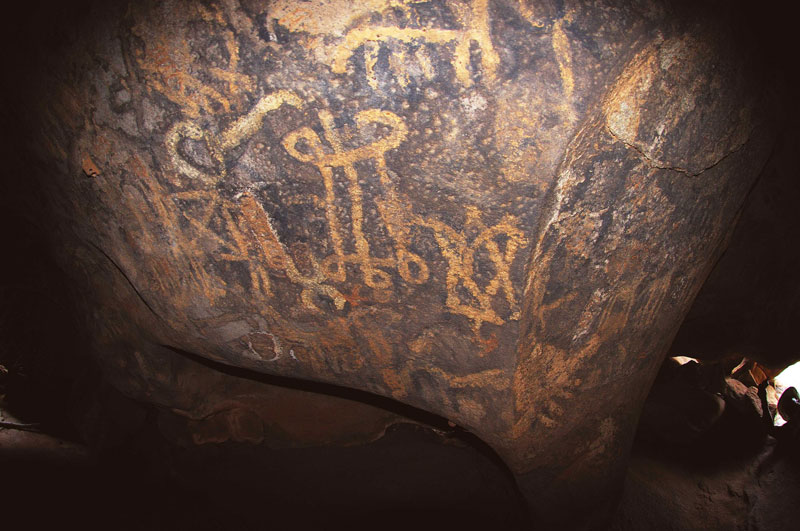
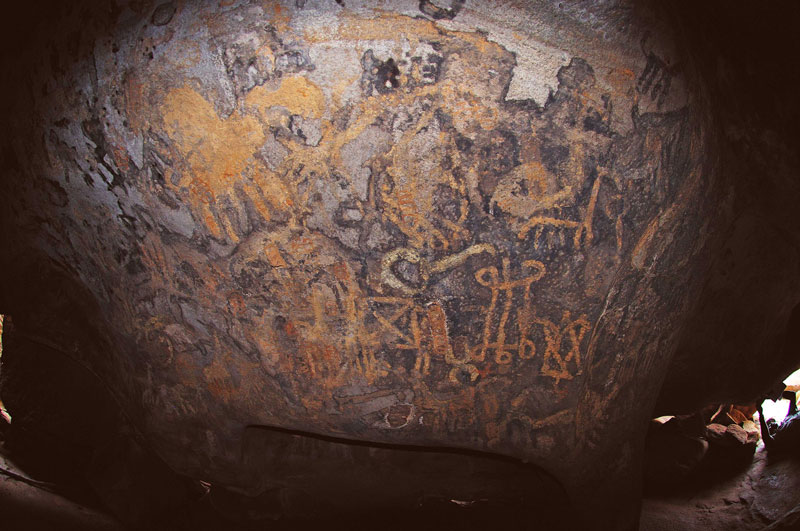
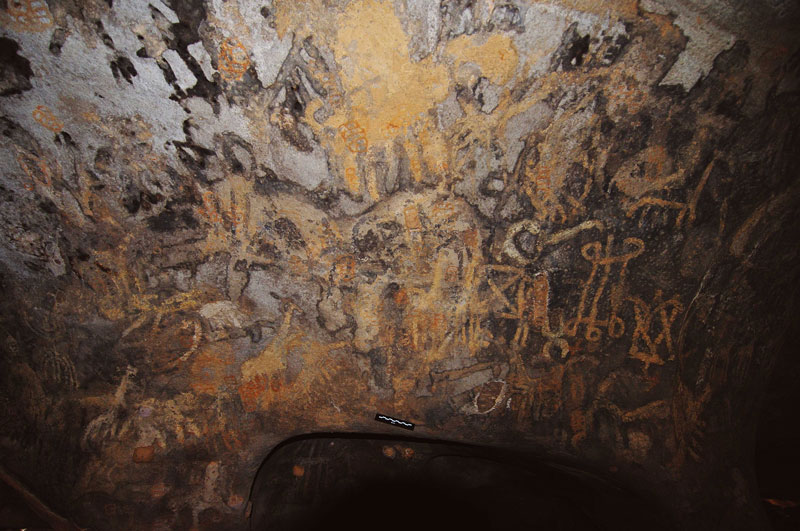








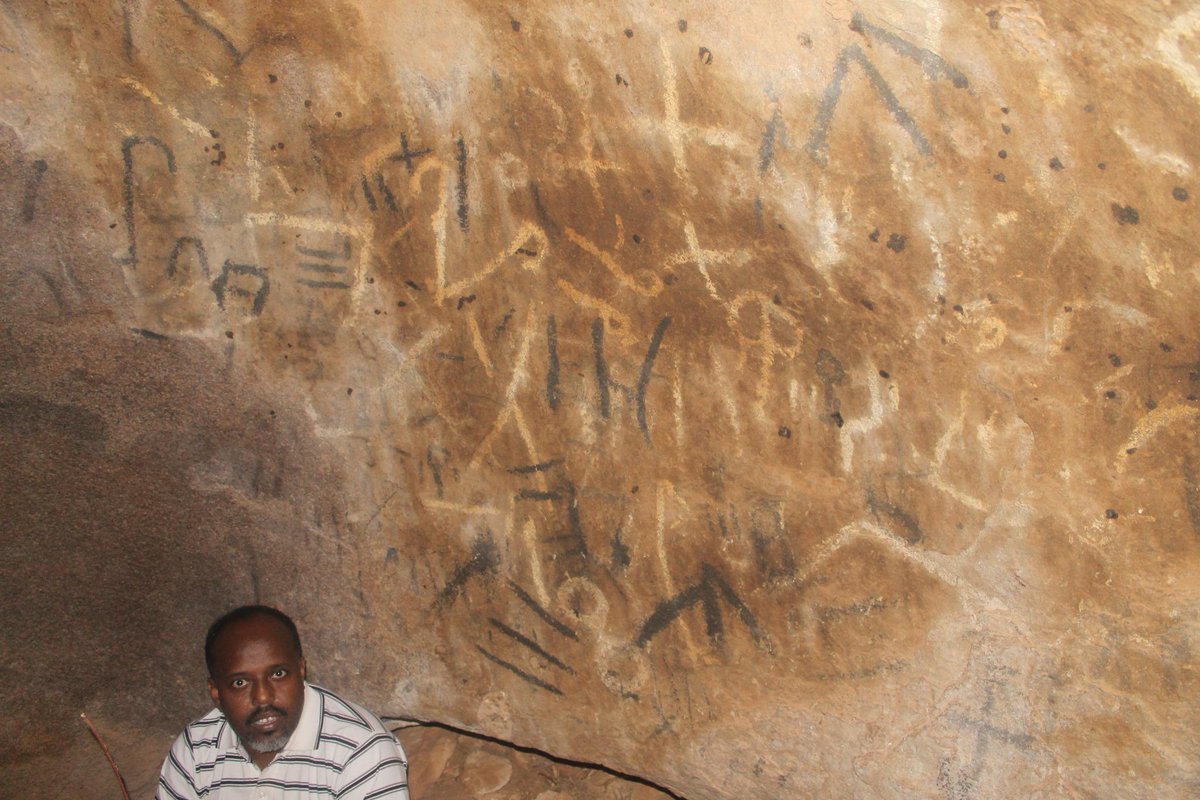














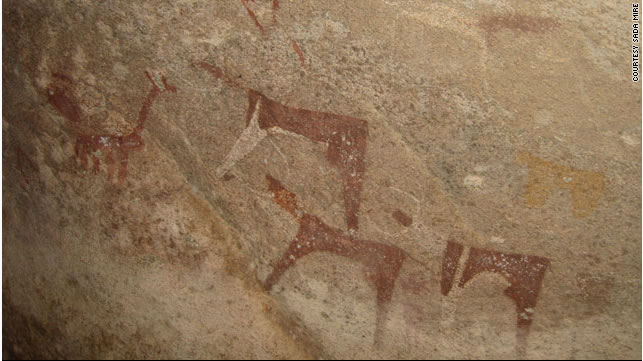
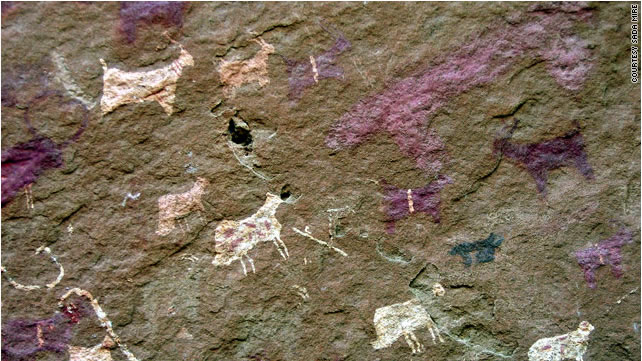
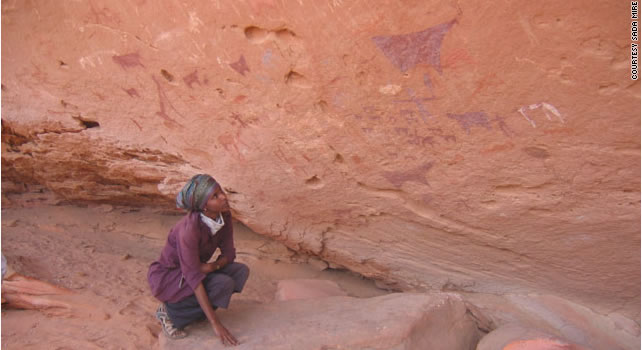



 were in the hinterlands of Abyssinia at this point of time' is what I would expect from a reply.
were in the hinterlands of Abyssinia at this point of time' is what I would expect from a reply.



